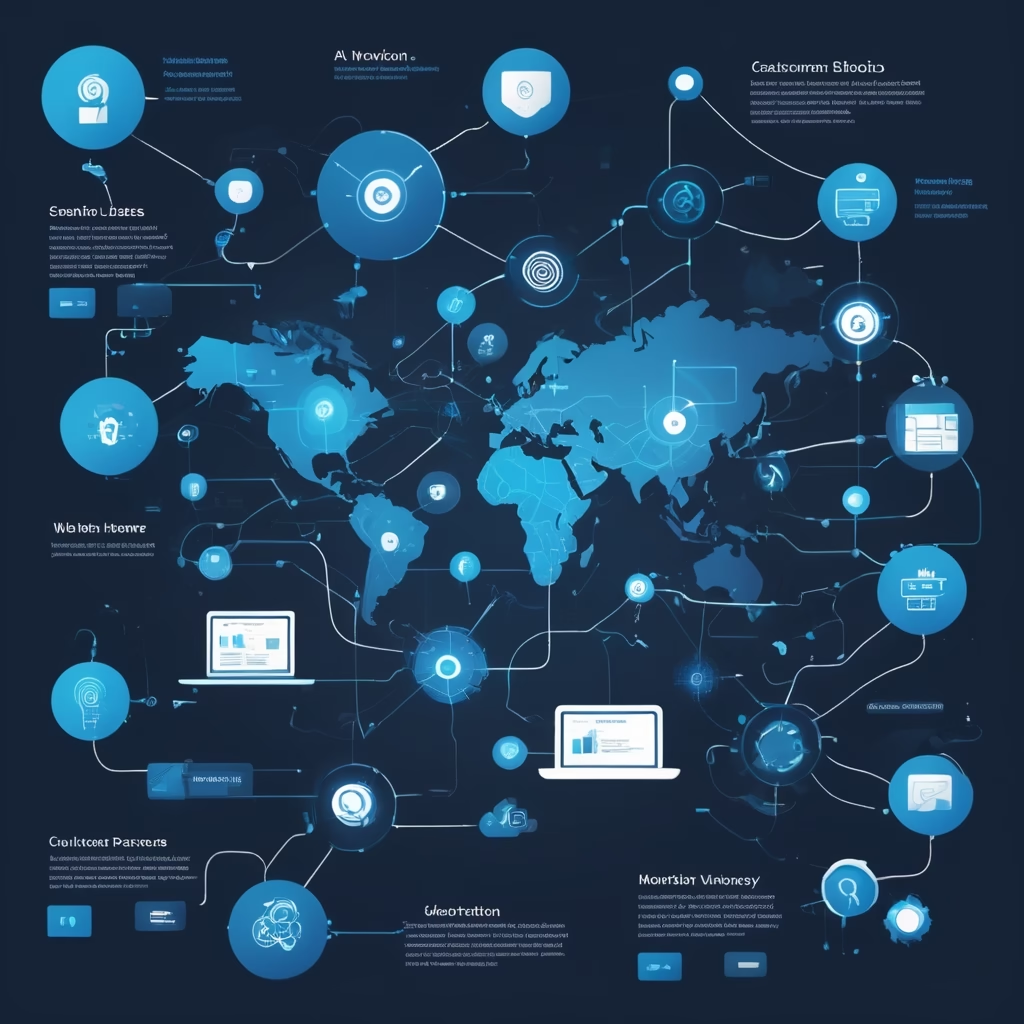Autonomous Customer Journey Mapping: A New Standard

Autonomous customer journey mapping is rapidly becoming the new standard for SaaS and enterprise companies striving to deliver seamless, personalized experiences. In today’s competitive digital environment, customer experience is a key differentiator for SaaS and enterprise businesses alike. Traditional customer journey mapping, which relies on manual data collection and periodic updates, is increasingly being outpaced by customer expectations for seamless, personalized interactions. Autonomous customer journey mapping—powered by artificial intelligence and automation—is now setting the new standard for customer success management. zeeproc, as an advanced agentic AI platform, is leading this transformation by enabling businesses to map, analyze, and optimize customer journeys in real time, autonomously.
What Is Autonomous Customer Journey Mapping?
Autonomous customer journey mapping leverages AI and machine learning to automatically capture, analyze, and visualize every customer interaction across all channels—from onboarding and ongoing engagement to renewals and cross-sell opportunities—without manual intervention. This approach ensures that journey maps are always current, actionable, and tailored to the unique needs of each customer segment.
Why Autonomous Mapping Matters
Modern customer journeys are complex, spanning multiple digital and physical touchpoints. Manual mapping is slow, prone to error, and quickly outdated. Autonomous mapping addresses these challenges by:
- Speed and Scale: Automatically processes vast amounts of customer data across all channels.
- Accuracy and Insights: Detects trends, drop-offs, and bottlenecks that traditional methods might miss.
- Real-Time Updates: Continuously refreshes journey maps to reflect current customer behavior.
- Personalization: Enables hyper-personalized experiences by understanding individual journeys at scale.
As customer expectations shift toward hyper-personalization, the role of the Customer Success Manager is evolving in the age of AI —making autonomous tools a necessity, not a luxury.
Recent research underscores that “CJM automation is suitable for problem formulation of human-AI decision-making collaboration in marketing,” supporting more dynamic and data-driven journey mapping (Frontiers in Artificial Intelligence, 2022).
How Autonomous Customer Journey Mapping Works
At its core, autonomous journey mapping involves:
- Data Aggregation: The system collects data from CRM, product analytics, support tickets, social media, and more, creating a unified, 360-degree view of the customer.
- AI-Driven Analysis: Advanced algorithms analyze customer actions, identify patterns, and predict future behaviors.
- Dynamic Visualization: Interactive, automatically updated journey maps allow teams to drill down by segment, channel, or timeline for actionable insights.
To see how agentic AI enables this transformation in real-world scenarios, check out our guide on how LLMs are shaping a new era of autonomy.
zeeproc: Your Partner in Autonomous Customer Journey Mapping
zeeproc’s agentic AI platform integrates all business data to autonomously run every customer touchpoint—onboarding, ongoing engagement, renewals, and cross/up-sell—ensuring a seamless, data-driven customer experience. Key features include:
- 100% Automated Customer Success: From onboarding checklists to renewal workflows, everything is managed autonomously.
- Contextual Human Oversight: While the platform operates autonomously, it provides CSMs with summaries and action items for intervention when needed.
- AI-Powered Insights: Real-time analytics, sentiment analysis, and predictive recommendations help optimize customer experiences and reduce churn.
- Comprehensive Data Integration: With 100+ ready integrations, zeeproc connects to all relevant data sources, ensuring a holistic view of the customer journey.
Customizable Workflows: Businesses can fine-tune every aspect of customer touchpoints, tailoring automation to specific business rules and workflows.
Many CSM teams still rely on repetitive, manual renewal processes—learn how to break that cycle with our piece on manual renewals and the need for automation.
Benefits for SaaS and Enterprise Teams
For SaaS and enterprise organizations, autonomous customer journey mapping with zeeproc delivers:
- Early Issue Detection: Spot churn signals and engagement drop-offs before customers leave.
- Optimized Onboarding: Understand and improve onboarding flows for new users.
- Improved Support: Tailor support resources to frequent pain points uncovered in real-time journey analysis.
- Data-Driven Growth: Align marketing, sales, and product teams around a shared, real-time view of customer experiences.
Want to go deeper? Read how businesses are maximizing customer retention with AI-powered RevOps strategies to align success with revenue outcomes.
Challenges and Considerations
While autonomous customer journey mapping offers immense value, companies should keep these factors in mind:
- Data Privacy: Ensure compliance with regulations like GDPR by securing customer data and offering transparency.
- Integration Complexity: Successfully aggregating data from disparate sources can be technically challenging—zeeproc’s open integration framework simplifies this process.
- Change Management: Teams must adapt to new insights and workflows generated by autonomous systems.
- Continuous Training: AI models require ongoing tuning to remain accurate and relevant.
The Future of Customer Journey Mapping
As AI technologies advance, autonomous customer journey mapping will become indispensable. Organizations that harness this new standard—especially with platforms like zeeproc—will delight customers with seamless experiences, improve retention, and gain a competitive edge.
For more on this future, explore best practices for revenue operations with agentic AI and how they’re reshaping CX at scale.

